One of the most expensive items of expenditure for services provided public utilities is payment for water supply. However, this value is not constant and depends on the region. Cities or localities where a specific person lives. And the reasons for this are not the desire of local authorities to “cash in” on fellow citizens, but the real costs that fall on the shoulders of public utilities. They are calculated based on the actual consumption of resources (in our particular case, water), as well as the costs of their removal and further processing.
Of course, as a starting point, there are certain regulatory documents, as well as methods for how to calculate all this. But the final figures are approved at the level of local authorities. However, such standards will be different for hot and cold water. You need to understand that calculated standards are used only in cases where there are no water consumption meters in the house. In other cases, water consumption is calculated on an actual basis. The consumer pays for what he directly used.
Water consumption standards per person per month
The principle of calculating water consumption is based on the entire process of its consumption in a modern home. To do this you need to calculate:
- frequency of use of the bathroom;
- using the bathroom;
- most comfortable temperature water in the bathroom;
- use of tap(s) or other sources of water consumption.
According to calculations, every Russian, according to average statistical data:
- Goes to the toilet 118 times/month (about 4 times a day).
- Takes a bath 4 times a month.
- The sink is used 107 times a month.
- He showers 25 times a month.
- Uses the kitchen sink 95 times a month (3 times a day).
- Spends 31 times a month on general apartment needs (laundry, mopping, dusting).
The Ministry also provided the following standards for hostel residents:
- He showers 17 times a month.
- The toilet is visited 123 times a month.

Typically, to this data are additionally added coefficients for home maintenance (approximately 5%), possible losses during transportation (in the case of meters, such “punctures” fall solely on the responsibility of the water supply company), as well as the treatment of waste water in sewer drains. Hot water must be heated to a certain temperature. True, metering devices that begin to take into account consumption hot water, only if it has a minimum permissible temperature regime, which is still rare in our country.
Now a little about the actual calculations. For example, in Moscow Since 2009, a principle has been established where the rate of water consumption per person, taking into account all coefficients and even its actual consumption, cannot exceed 2 times the basic rate. Thus, management companies were encouraged to use water carefully, constantly monitor the serviceability of networks, and also fight against illegal residents who consume more water than required by the standards.
In Moscow and St. Petersburg. Regarding frugality, it is important to note that the average Russian is significantly behind Europeans in this indicator. For example, if in Europe an average of 100 liters of cold and 70 liters of hot water are consumed per person per day, then in St. Petersburg this figure is 220 liters of cold and 150 liters of hot water per person. In Moscow, the average consumption of cold water is coming at 230 liters, and hot about 160 liters. But to this we should also add the state of our water supply and sewerage systems, which very often fail and require enormous human and material costs for their restoration. Much also depends on the 2017 production calendar, Calendartruda.ru, according to which there are many holidays in January, which means people use more water for household needs.
The starting point, the “base” for the calculation is established by the relevant ministry, but its practical implementation is carried out locally.
By the way, today the state is implementing the principle of citizens’ voluntary transition to apartment-based water consumption meters. Indeed, today almost 50% of citizens who use a centralized supply of cold and rook water pay for such supplies based on approved consumption standards. And in order to stimulate such a transition, it is planned to gradually significantly increase the cost of services for water supply according to approved standards.
Feature of saving when consuming water with a meter.
It is believed that if a meter is installed in the house, you can get very impressive savings in water consumption. Indeed, in this case, you do not pay mythical estimated amounts, but specifically for what you yourself used. In fact, this is what happens. Especially if the resource is used carefully. But sometimes installing a meter can cause a very impressive bill for water consumption. This happens when a large family does not monitor water consumption and is too lazy to turn off taps and fix leaks and punctures.
The most common reasons for increased water consumption include:
- - water leakage (frequent drops when the tap is turned on) due to leaky taps;
- - water leaking from the toilet due to an unregulated drainage system;
- - uncontrolled leakage of water (for example, using a large jet of water when washing dishes, brushing teeth, shaving, washing);
- - lives in the same room large number people (for example, relatives have come to stay for a long period of time).
You need to understand that with increased consumption you also pay for increased water drainage rates. Therefore, even if you have meters, you should carefully monitor the water supply and drainage systems, as well as your own behavior. This will allow you to get impressive savings, which, according to some estimates, can be up to 30% of free resource consumption.
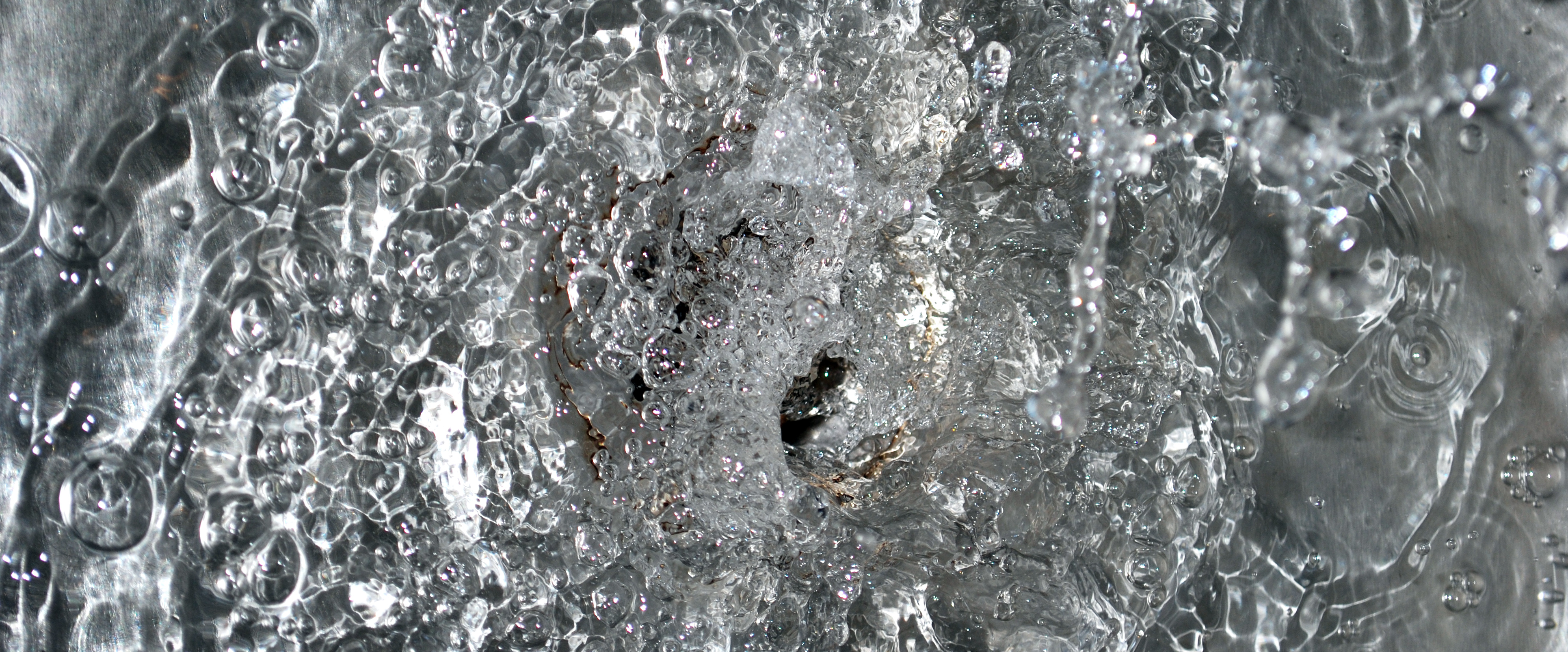
It is important to note that government agencies are interested in installing meters for residents. After all, in this case they pay for the exact amount of resource consumed. And those overhead costs that arise in the process of supplying water to the consumer are usually included in the process of preparing the basic principles of calculations, when the cost of one cubic meter of water is determined. In other words, the consumer still pays for all repairs and emergency restoration work carried out by public utilities.
If there is no hot water supply
In many regions, only cold water is supplied to houses, and its further heating is carried out by special gas, electric or other water heaters, or by water heating devices. In this case, the standard water consumption per person increases. It usually fluctuates at the level of the total consumption of hot and cold water per person. But local authorities, in order to accurately determine this indicator and prescribe it as the norm, use real statistical data for a specific period (usually the previous year).
 In this case important point it may turn out right choice a water heating device, thanks to which the need of a particular person or family for hot water will be fully satisfied. Typically, its volume will depend on the number of people who use hot water for daily purposes. For one person, a boiler volume of 10-30 liters will be quite enough. A family of two people may already need a tank of up to 50 liters, but if 4 to 5 people live in the house, then for optimal comfortable use you will have to warm up a tank with a volume of 120 to 150 liters. The rate at which the water warms up will depend on the heating system used (gas, electric, solid or liquid fuel).
In this case important point it may turn out right choice a water heating device, thanks to which the need of a particular person or family for hot water will be fully satisfied. Typically, its volume will depend on the number of people who use hot water for daily purposes. For one person, a boiler volume of 10-30 liters will be quite enough. A family of two people may already need a tank of up to 50 liters, but if 4 to 5 people live in the house, then for optimal comfortable use you will have to warm up a tank with a volume of 120 to 150 liters. The rate at which the water warms up will depend on the heating system used (gas, electric, solid or liquid fuel).
If we take into account that the cost of supplying hot water centrally is usually 3 or more times higher than the same services for supplying cold water, installing a water heating device in a house pays for itself in a matter of months. After all, even the increased consumption of cold water and the need for additional payment for energy resources are fully compensated by the difference in the cost of the centralized supply of hot water.
Features of water supply in rural areas
Water consumption standards in rural areas are established only if such supply is carried out centrally, and local authorities bear some costs for maintaining water supply systems. The cost of water in this case is determined based on actual level costs for its submission. The tenant may be required to pay both for the supply of water directly to the house, and for the presence of a common water pump on the street.
But in most cases, water consumption, as well as its disposal, is carried out by each household individually. This can be done manually (if there are wells and garden plots in the yard), or semi-automatically (when the well is equipped with an additional water intake system with an electric motor). The second method makes it possible to equip a house no worse than a city apartment with all the amenities directly in the house (bathroom, sink, bathtub, shower). True, here you will have to take into account the characteristics of your area, as well as seasonal temperature changes (summer and winter). To do this, you will need to correctly calculate the laying level of the water pipes (so that they are able to supply the required volume of water and do not freeze in winter time), the required angle of inclination, as well as the optimal diameter of the pipes (to maintain the required pressure during the process of pumping water).
All maintenance of such a system falls on the shoulders of its direct owner. He can do this himself, or he can hire specialists. In this case, there is no need to pay anything to local authorities.
Many apartment owners in our country are concerned about the question of whether they have the right to use water without a meter and whether the water utility can force them to install a water meter. The thing is that, in their opinion, the real benefit from installing a meter is small, and the installation itself is quite expensive, so not all families can afford it. For those apartment owners and residents who do not have a water meter, the state has determined average water consumption rates per person.
According to them, calculations were made until recently. However, since mid-2015, the situation with metering devices has changed slightly. In our article you will find out whether you can be forced to install a meter, what sanctions are provided for failure to install it, and who has the right to refuse to install a water meter.
Standards for payment without a meter
First, let's figure out what payment standards apply when you don't have a meter. As a rule, the water utility has established a single standard for residents of apartments without a water meter. It operates throughout Russian Federation. Thus, the following rates are calculated per person:
- It is believed that one person consumes about 7 cubic meters of cold water per month, namely 6,935. For apartments with a gas multipoint flow-through heater, this value is multiplied by a multiplying factor and is equal to 10 m³ per person. With a bathroom heater only, the figure is 9.5 cubic meters. For houses without a bathroom, the standard is multiplied by a reduction factor and reduced to 4.57 m³;
- for hot water the standard is slightly lower - there are 4.7 cubic meters of hot water per month per resident.
Thus, the water utility takes into account that per month one tenant in an apartment without a meter consumes 11.5 cubic meters of water. If we convert this number into liters and divide it by 30 days, we get that one person consumes a little more than 380 liters of water per day! Agree, this is a rather large figure, provided that the volume of a full bath is 250 liters. With such holes, you can give a bath to all family members every day, but no one does this. In addition to the bath, you will still have 130 liters left for household needs.
Important: we can conclude that it is much more profitable to install a water meter and pay less.
Vodokanal conducted research and found that one person consumes on average 3 cubic meters of cold water and two cubic meters of hot water per month. As a result, it turns out that in a situation where you do not have a meter, you overpay for 6 cubic meters. Therefore, your amount on the receipt is twice the actual expenses. It turns out that it is more profitable to install a metering device.
Savings with a meter
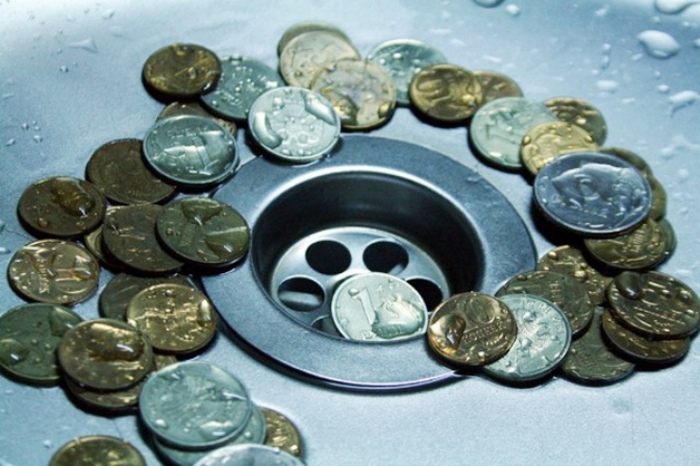
If you are still in doubt whether to install a meter or not, then keep in mind that you are required to pay for water monthly, regardless of whether you lived in an apartment at that time or were away. After installing the device, you will pay for the water actually used. That is, you do not have to pay for the period when you were not at home. The only thing that needs to be done regularly is to report meter readings to the water utility.
Even after installing the device, you can safely use water without fear of large amounts in receipts, because the actual consumption is usually 2-3 times less than the average per person in an apartment without a metering device.
Combating wastage of water

Since July 1, 2015, tariffs for paying for water without a meter have increased. From now on, those who do not want to install a meter will pay much more. However, according to the water utility, any person has the right to install the unit on water and feel the difference. But is this really so?
A water metering unit can be installed for 20-60 USD. However, these costs may be higher if you need to prepare the place or change something in the apartment. If a family in which all members are registered in this apartment decides to install the meter, then the benefits are obvious and the installation costs will pay off in a few months. However, installing a meter with 1 registered person and 3-5 actually living people turns out to be, on the contrary, unprofitable. In this case, many apartment owners could refuse to install the unit. Until recently, there was a law according to which the owner of an apartment has the right to refuse to install a meter.
New requirements for the installation of metering devices
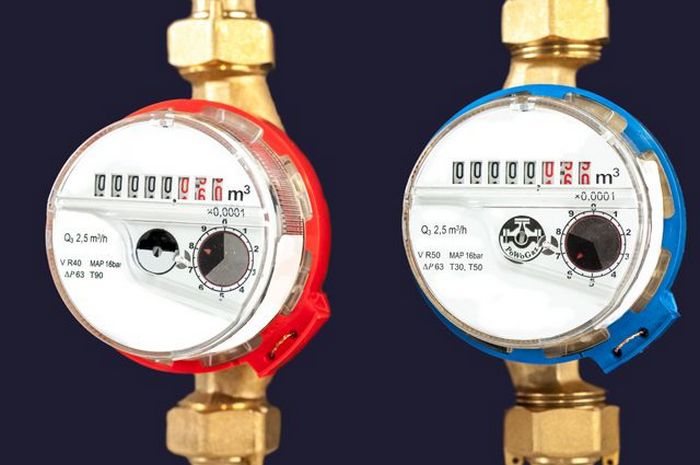
Until last year, a decree of the Russian government established that no one could force you to install a metering unit. And even the water utility cannot impose such an obligation on you. You had the right to refuse. That is, the apartment owner has the right to independently decide whether to install a meter or not.
However, since the end of 2015, in accordance with paragraph 9 of Art. 13 261 of the Law “On Energy Saving...” citizens of the Russian Federation are required to install meters for water, heat and electricity. Moreover, since the introduction of this law, fines for failure to install metering units have been imposed only on management companies, but over time, sanctions may also be applied to residents.
At the same time, citizens must install the unit within 3.5 years from the date of entry into force of the law. Of these, in the first 2.5 years the device can be installed at the expense of the water utility. That is, the apartment owner has the right to supply the product free of charge. But in last year During this period, the tenant must already pay for the installation. Despite the obvious benefits of quick and timely installation of equipment, only 60 percent of the population agreed to do so.
Forced installation
![]()
Many homeowners are afraid that from the moment this law comes into force, employees of management organizations may come to them and forcefully install meters. Some believe that if residents resist, water utility workers may contact the police.
Actually in this regulatory document It is clearly written that citizens themselves must provide access to employees of governing bodies to their home, but this does not at all oblige them to forcibly install a metering unit. This is a purely personal matter for each person, and no sanctions or fines can be applied.
However, the fact that all owners of apartments without meters will have to pay more and more every six months due to the use of an increasing coefficient, in itself looks like a punishment.
Increasing factor
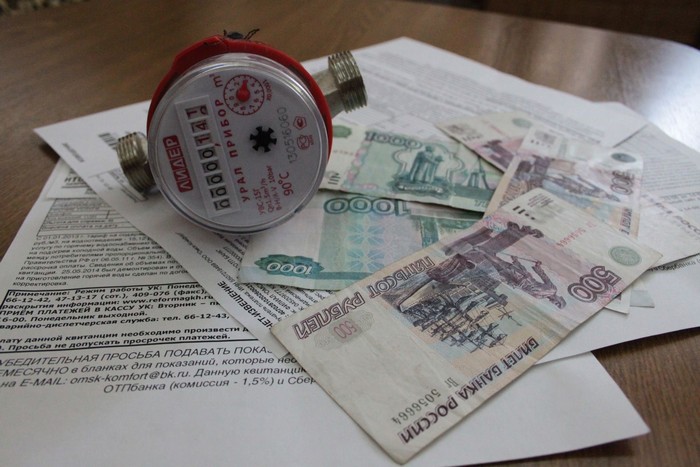
Since July 2015, increasing coefficients have been introduced in the Russian Federation, which will be used when calculating tariffs for subscribers without water metering units. For such people, water utility bills will gradually increase.
In this case, the dynamics of price increases will look like this:
- in the period from 01.01 to 30.06.2015 a coefficient of 1.1 will be applied;
- from the first of July to 31.12. the same year the increasing index increases by 0.1 and is 1.2;
- from the beginning of this year to its middle the coefficient used in the recalculation will be even higher - 1.4;
- from mid-2016 to its end the increasing indicator for tariff recalculation for residents without meters will increase to 1.5.
In addition, on next year it is planned to increase the multiplying factor to 1.6. There are no exact data for 2018 yet; we need to wait for the release of new standards. In this regard, one can trace a trend towards the benefits of using water metering equipment.
The device cannot be installed
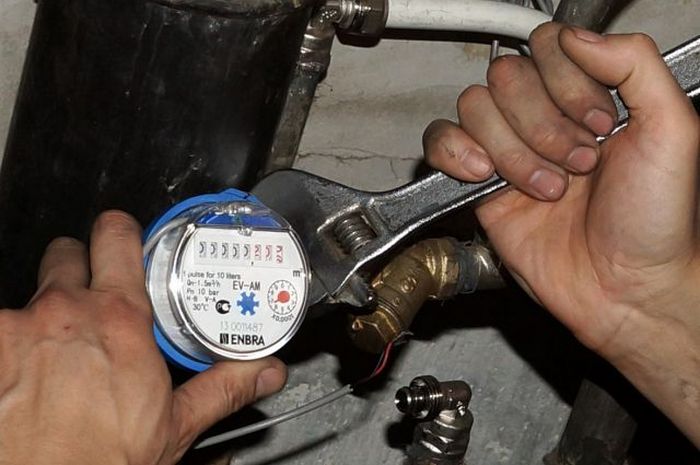
- If the building in which your home is located is officially recognized as dilapidated or in disrepair.
- If, to install the device, the water utility must carry out major renovation networks or at home.
- The device must not be installed without complying with accepted standards.
- The owner does not have the right to place the unit on water pipes in poor condition.
- Also, the device must be removed or not installed at all if it is to be operated in unsuitable conditions, that is, temperature, humidity or electromagnetic waves may interfere with the operation of the equipment.
If the homeowner knows that he does not have the right to install metering equipment for technical reasons, but receives payments that use an increasing factor, then he must do the following:
- Call an employee of the management company who will inspect the installation site of the device, assess the condition of the pipeline, and inspect the installation room.
- The employee must draw up a report. This document must clearly indicate why you cannot install metering equipment. In this case, the paper must indicate the house number, apartment and street.
- If you already have a device and its operating conditions have become improper, then you can ask workers to remove the unit until the conditions meet the requirements.
Conclusions: no one has the right to force you to install a meter, that is, forced installation is illegal.
Want to save on utility bills? Install hot and cold water meters in your apartment. This is not a bright slogan Management company housing and communal complex, but reality. Those who have such devices in their own apartment or house have long noticed that the amount in bills for water consumption is less than it was before, even before the installation of metering devices. This is because the norms of water consumption per person per month without meters are large numbers that “painfully” hit the pocket.
Of course, installing meters is voluntary. Neither the Management Company nor the municipal administration can force the property owner to use such equipment. But for those who live the old-fashioned way, without meters, increasing coefficients have been established.
There is no legislative act in Russia that would precisely establish the standard for liquid consumption for one person in a home without water meters. But for management companies in different regions countries have developed a special formula by which this indicator is calculated. Take into account:
- the entire number of water consumers in the locality;
- region with its climate characteristics;
- the state of the municipality's water supply system.
It is difficult to make calculations on your own; to do this you need to know exactly all the above indicators. To the common man such information is not available. Therefore, to find out the standard, call your city’s water utility or the management company that services the house where you live. Norms are open information; no one has the right to prevent its disclosure. Often the standards are prescribed on the websites of these organizations. For example:
- In the capital of our Motherland, the following standards are defined: 3.81 cubic meters of hot water and 5.48 cubic meters of cold water per citizen.
- In the cultural capital there are other indicators: 3.4 cubic meters and 4.69 for hot and cold liquid, respectively.
- For comparison, in the capital of Ukraine the standards are defined as follows: 3 – cold and 4.5 – hot.
- In the capital of Belarus - the total amount of water poured by the consumer should not exceed 7.8 cubic meters.
If the house does not have hot water supply, then the consumption rate is the sum of the consumption of hot and cold water.
Find out about the regulations in your region from the water utility or your Management Company!
As an example
If we consider the calculation of standards using a specific example, it looks like this. In the city of Murmansk there are 2 thousand apartments and houses that use cold water. 500 of them have meters installed. The remaining 1,500 properties do not have water meters. In one month, 20 thousand cubic meters of cold liquid were consumed at all these facilities. 5 thousand of this number were consumed where meters were installed. The remaining 15 thousand cubic meters of cold water will be divided between those properties where there are no meters. When calculating the readings for each apartment or house, the number of people who are registered or registered at the facility will also be taken into account. The same goes for hot water.
If communal metering devices are installed in an apartment building, then the calculation rules are similar to those given above. But the total number of consumption objects will be equal to the number of apartments in the building.
About increasing factors
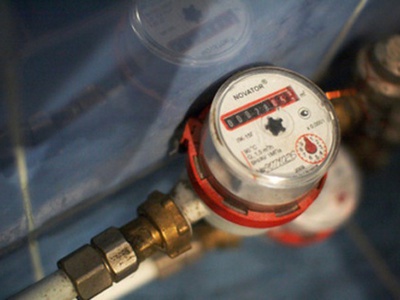 Home-grown “smart guys” are trying to deceive the system. They register one person in an apartment or house, or do not register anyone at all, but live with five, six, and so on. If earlier such a scheme could have taken place, today they are trying to fight this at the state level. Management companies have the right to arrange on-site inspections. If the fact of such deception is revealed, then violators will face large fines and recalculation of utility bills.
Home-grown “smart guys” are trying to deceive the system. They register one person in an apartment or house, or do not register anyone at all, but live with five, six, and so on. If earlier such a scheme could have taken place, today they are trying to fight this at the state level. Management companies have the right to arrange on-site inspections. If the fact of such deception is revealed, then violators will face large fines and recalculation of utility bills.
For those water consumers who have not yet installed water meters in their homes, increasing coefficients have been established:
- in 2015 – 1.1;
- in 2016 – 1.3;
- in 2017 – 1.6.
It turns out that those who do not have a meter will pay for water consumption according to the standard in 2017 and another 60 percent on top. The amount is significant. They plan to only increase the increasing coefficient from year to year. Therefore, soon for those who have not yet installed a water meter in their home, hot and cold water will truly become “golden” in price.
In conclusion
Make it a rule that a stingy person pays twice. It is cheaper to install water meters than to pay according to regulations. Although this is a purely individual matter. No one can oblige a homeowner to install a metering device in his own apartment or house. You can find out about water consumption standards per person without meters from the resource supply organization or the Management Company. The information is publicly available.